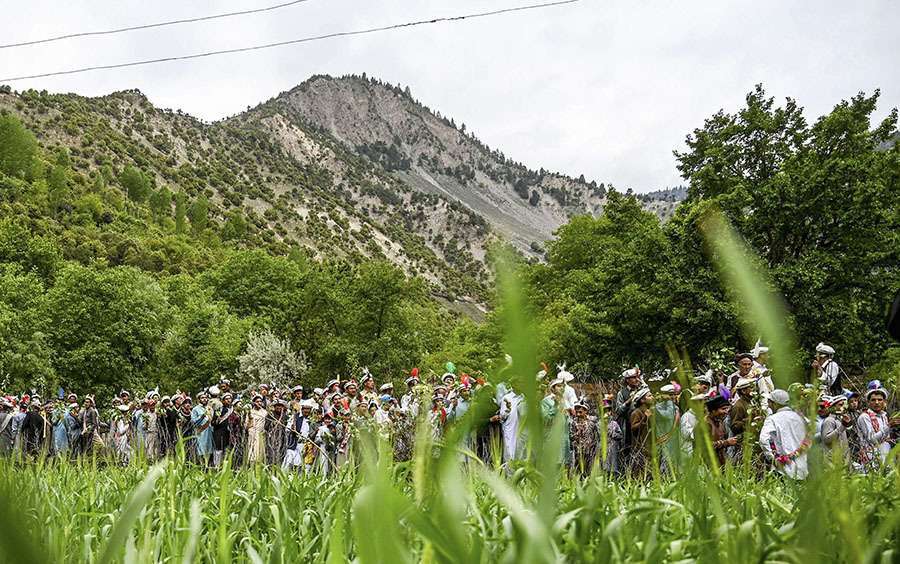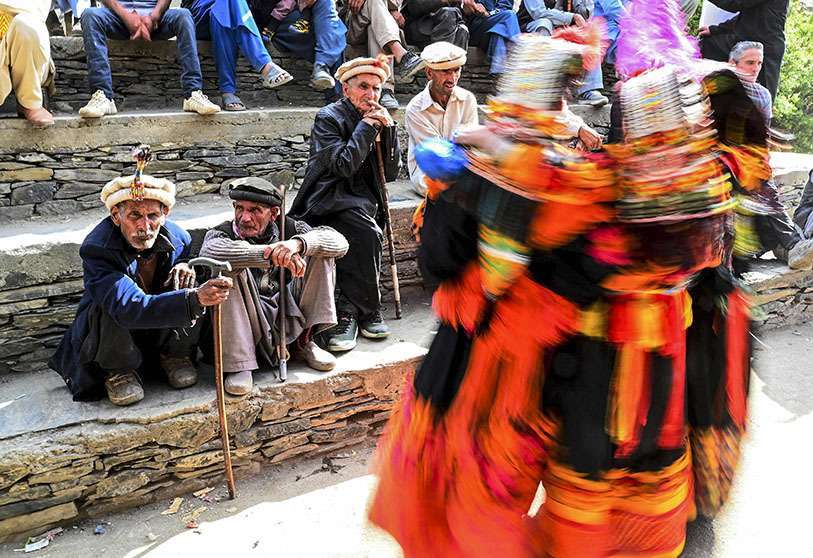The Kalash: Pakistan's last animist tribe

In the north of Pakistan, in the Rumbur Valley surrounded by the cold Himalayan mountains, there is an ethnic group of approximately 3,000 inhabitants: the Kalash. This little-known people have maintained their customs, rituals and identity for almost 2,300 years. Having taken refuge in the valleys of the highest peaks of Afghanistan and Pakistan, at an altitude of 2,500 metres, they have managed to persevere with their unique language, Kalasha.
What is unique about these people is that despite the heavy invasions of the area from Alexander the Great to the current Muslim and Taliban offensive, they have managed to maintain their culture and distinct ethnic traits. In a country where the Muslim population constitutes 96.28% of the population, the Kalash have managed to survive and maintain a culture unique in the world.

As for their origin, there are several theories that try to explain where they came from. The most widespread and most widely held local belief is that this ethnic group came from the troops of Alexander the Great who, in their quest to reach India, had to cross the areas where the Kalash now live. These troops would have joined with local ethnic groups, mixed with Persians, and would have resulted in the current inhabitants of the region, characterised by their white complexion, blue eyes and blond hair.
After suffering various persecutions by Muslims, who refer to them as Kafirs or infidels, the Kalash have taken refuge in three uninhabited valleys in northern Pakistan: Rumbur, Bumburet and Birir. This isolation, favoured by the difficult accessibility of the area, has allowed this population to maintain their religion and traditions almost intact in the area disparagingly called Kafiristan or the Land of the Pagans by Pakistanis. However, the progressive occupation of the Kalash lands by Muslims has resulted in the Birir people being virtually Islamised.

The Kalash community contradicts the values of Islam by differing in two aspects: the place of women in society and the drinking of alcohol. Despite being a people living in a country strongly marked by the Islamic religion and where in some parts of Pakistan women are not allowed to go out alone, Kalash women do not wear veils or cover their hair. Similarly, divorce is accepted for both women and men and relationships are free. In spite of these aspects, which are not in keeping with some of the Islamic practices in the country, women are still clearly oppressed by the fact that they are not allowed to be heirs and have only their jewellery as their possessions.
Red tents, known in this area as "bashaleni", are still a common feature of women's society. Here Kalash women are confined during menstruation as they are considered impure.

Other problems experienced by women in this society is that girls, having white skin, are more susceptible to abduction by people from Afghanistan and other parts of Pakistan. These girls are abducted for forced marriages or to be sex slaves in brothels. For this reason, families try to keep them in their homes.
The genuine culture of these people is distinct from their neighbours in that they are believers in a polytheistic, pre-Islamic, pre-Buddhist religion. They share rituals related to shamanism and worship certain deities carved in wood. In different rituals, they worship the gods with music, dance and self-made alcohol. Their religion celebrates three festivals: Zhosi, Utchau and Chowmos, animistic celebrations that are held only in this part of the world. At these festivals, both men and women gather around large bonfires to dance and pray for good harvests. Their religion is closely linked to the cycles of nature and they respect all the elements of nature, considering them to be "living beings".
Gradually, the Kalash men have lost the custom of wearing their traditional dress and have taken on the dominant costume of the Pashtun population. In the 1950s, men could still be seen wearing the traditional cap, characterised by flowers and feathers. Women, however, continue to preserve the original clothing, known as calas. These women also adorn their hair with multicoloured hats and dozens of necklaces.

The ravages of war and the spread of Islam have caused this population to drop drastically. In 1900, the Kalash numbered 100,000 people; now there are barely 3,000 in the area. Moreover, the context in which they live is not conducive to the perseverance of their culture, which is severely criticised by the Muslim community. Children are obliged to teach Islam at school, a religion that teachers describe as "superior". Some locals believe that the entire Kalash culture will disappear in 20 years due to creeping Islamisation, the exodus of young people to other parts of Pakistan and the strong Taliban offensive.
Today, the Kalash tribe is trying to resist on this pagan 'island' of nature worship, where women are freer and civilisation continues to maintain its essence in the midst of an Islamic plain stretching in all directions.










